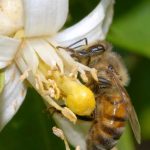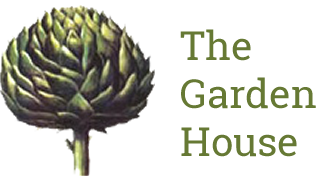We love bees!
Posted:8 February 2010
On the last Saturday in January The Garden House hosted a talk by bee keeping expert Pam Hunter, a committee member of the BBKA (British Bee Keeping Assoc.) www.britishbee.org.uk. It was certainly fascinating stuff, but be under no illusion – amateur beware!
Many of us have been seduced by the idea of bee keeping – we’re keen to aid sustainability and pollination, and we love the idea of collecting and bottling our own honey. Also magazines are talking about bee keeping as a way of countering the decimating losses in honey bee populations caused by the Varroa mite and changes in weather patterns.
However those of us amateurs with romantic illusions of bringing rural bee keeping into the suburbs or inner city, were quite rightly challenged by Pam. Her view is that bee keeping has in some ways become a ‘fashion’ (a little like hen keeping), a hobby that gardeners are embarking on without realizing the commitment, experience and support needed, and in many cases without first thinking about the issues around safety (for your family, pets and neighbours).
Bees are not necessarily dangerous, but as Pam pointed out they are ‘wild’, we cannot co ntain them (swarming potentially is an issue), and they need to be treated with care and respect.
ntain them (swarming potentially is an issue), and they need to be treated with care and respect.
If you are seriously interested in keeping bees Pam recommends joining your local BBKA group, taking one of their in-depth courses, and using their knowledge and support before deciding.
For most of us, the pleasure of encouraging bees into our gardens is enough. Bees depend entirely on plants, using scent and sight to identify pollen-rich flowers (they tend to prefer yellows and blue flowers). So fill your garden with bee-friendly plants and you’ll be doing your bit to sustain bee populations and encourage local honey production (honey bees fly up to 5 miles radius in search of food).
Bees prefer single flowers double flowers are of little use, because theyre too elaborate. The single-flowered rose family, which includes crab apple, hawthorn and potentilla, seem to be irresistible to our buzzing friends, as are the flowers of fennel, angelica and cow parsley, and sedums. Tubular-shaped flowers, such as foxgloves, snapdragons, penstemons and heathers, are also favourite feeding places for bees.
Early flowering plants for bees: Winter aconite, snowdrops, crocus, Daphne bholua, Hellebores, Clematis cirrhosa, Chimonanthus praecox, Sarcococca confusa, Mahonia, Hamamelis.
Spring flowering: Bluebell, bugle, crab apple, daffodil, flowering cherry and currant, forget-me-not (Myosotis), hawthorn, hellebore (Helleborus corsicus, H. foetidus), pulmonaria, pussy willow, rhododendron, rosemary, viburnum, thrift (Armeria maritima).
Early summer flowering: Aquilegia, astilbe, campanula, comfrey, everlasting sweet pea (Lathyrus latifolius), fennel, foxglove, geranium, potentilla, snapdragon, stachys, teasel, thyme, verbascum.
Late summer flowering: Angelica, aster, buddleia, cardoon, cornflower (Centaurea), dahlia (single-flowered), delphinium, eryngium, fuchsia, globe thistle (Echinops), heather, ivy, lavender, penstemon, scabious, sedum, Verbena bonariensis.
One last comment from Pam buy local honey whenever you get the chance – not only does it support local bee keepers, but it is hugely beneficial to our health!

